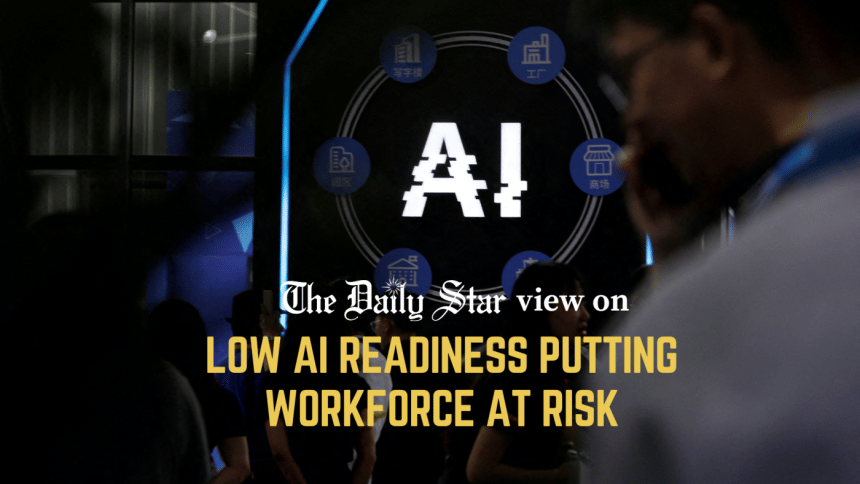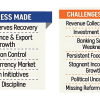Bangladesh must heed AI warning

Artificial intelligence (AI) is set to fundamentally reshape Bangladesh's economy but the country's lack of preparedness leaves its vast, young workforce vulnerable to risks. Bangladesh currently sits at the lower end of AI readiness in South Asia, primarily because its economic engine, comprising the garment sector and agriculture, has so far been least affected by automation. Yet, the experience of regional peers, particularly India—which now commands a nearly 30 percent wage premium for AI skills—demonstrates the rapid pace of this technology. As AI diffuses through global value chains, the temporary low exposure in Bangladesh today "could quickly become a disadvantage tomorrow," according to a report published by the World Bank.
The immediate threat is concentrated not in the factory floor, but in the white-collar engine of modern economy. Moderately educated young workers in roles like customer service and data entry are the most vulnerable to displacement. Indeed, generative AI has already been shown to reduce monthly job listings by around 20 percent for the most exposed white-collar occupations across South Asia. This directly challenges Bangladesh's aspirations to move up the value chain. At the same time, job postings requiring AI skills in 2025 also demonstrate a regional divide: at just 1.4 percent, Bangladesh lagged considerably behind Sri Lanka (7.3 percent), India (5.8 percent) and Nepal (3.3 percent), according to the World Bank.
Moreover, gaps in digital infrastructure and human capital define the chasm between opportunity and outcome in Bangladesh. Only about 62 percent of its population has internet access, and the rural-urban gap—a staggering 32 percentage points—is the largest among all emerging-market regions. This disparity directly deprives rural areas of the connectivity and reliable electricity vital for AI-driven growth.
The choice before Bangladesh is clear: seize a strategic "window of opportunity," or risk being left behind in the global technological race. Its relatively young labour force could be an advantage, potentially making AI adoption easier than in ageing economies, provided that workers gain access to the right skills. The government, therefore, must immediately prioritise affordable internet access and consistent electricity supply as a core economic necessity, closing the rural-urban divide. This fundamental infrastructure is essential for scaling AI adoption. Simultaneously, an urgent recalibration of human skills is required across the labour force. The government must expand educational and national programmes to instil foundational digital literacy for the wider populace while cultivating advanced AI skills for professionals. The government should itself lead by adopting AI to streamline bureaucratic processes, reduce corruption, and deliver services efficiently.
AI offers Bangladesh a chance to leapfrog into higher productivity. But it is not possible without supportive reforms and initiatives by both government and private actors.

 For all latest news, follow The Daily Star's Google News channel.
For all latest news, follow The Daily Star's Google News channel. 








Comments